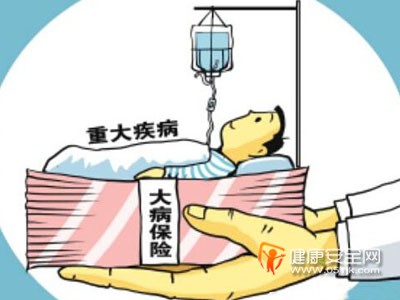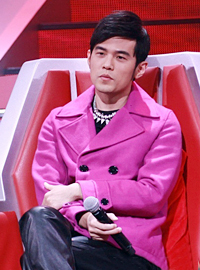
In 1899, the economist Thorstein Veblen observed that silver spoons and corsets were markers of elite social position. In Veblen’s now famous treatise The Theory of the Leisure Class, he coined the phrase ‘conspicuous consumption’ to denote the way that material objects were paraded as indicators of social position and status. More than 100 years later, conspicuous consumption is still part of the contemporary capitalist landscape, and yet today, luxury goods are significantly more accessible than in Veblen’s time. This deluge of accessible luxury is a function of the mass-production economy of the 20th century, the outsourcing of production to China, and the cultivation of emerging markets where labour and materials are cheap. At the same time, we’ve seen the arrival of a middle-class consumer market that demands more material goods at cheaper price points.
1899年,挪威裔美国经济学家凡勃伦在《有闲阶级论》中提到,人们花大价钱购买华而不实的商品以显示自己的社会地位,他把这种现象称作conspicuous consumption(显著消费或炫耀性消费)。100多年后,炫耀性消费依然是部分当代资本家一道风景。而当今的奢侈品比凡勃伦时代更加丰富。通过把生产外包给中国,开发劳动力和原料廉价的新兴市场,奢侈品充斥市场是20世纪大规模生产经济的一个功能。同时,我们看到中产阶级消费市场的形成,需要更多便宜的物质产品。
However, the democratisation of consumer goods has made them far less useful as a means of displaying status. In the face of rising social inequality, both the rich and the middle classes own fancy TVs and nice handbags. They both lease SUVs, take airplanes, and go on cruises. On the surface, the ostensible consumer objects favoured by these two groups no longer reside in two completely different universes.
然而,消费品的普及使其不再成为显示身份的象征。社会发展不平等,富裕和中产阶级都有了高档电视和名牌手包,他们同样开越野,乘飞机,坐游轮。表面上,两个群体喜欢的消费品不再完全属于两个世界。
Given that everyone can now buy designer handbags and new cars, the rich have taken to using much more tacit signifiers of their social position. Yes, oligarchs and the superrich still show off their wealth with yachts and Bentleys and gated mansions. But the dramatic changes in elite spending are driven by a well-to-do, educated elite, or what I call the ‘aspirational class’. This new elite cements its status through prizing knowledge and building cultural capital, not to mention the spending habits that go with it – preferring to spend on services, education and human-capital investments over purely material goods. These new status behaviours are what I call ‘inconspicuous consumption’. None of the consumer choices that the term covers are inherently obvious or ostensibly material but they are, without question, exclusionary.
既然每个人都可以买奢侈包和新车,富人就会采用更加隐性的方式展示他们的社会地位。当然,经济寡头和超级富豪仍然通过游艇、宾利豪车和豪宅炫耀自己的富有。但是影响精英阶层消费的有小康水平,受教育的精英,或者我称为“aspirational class”的中产阶级。这个新的精英阶层通过重视知识,构建文化资本巩固自己的地位。精英更看重知识和文化资本,把钱花在服务、教育和人力资本等领域。这种现象称作inconspicuous consumption(不显著消费)。这些消费选择都是无形不可见的,但是毫无疑问,非常具有独特性。
The rise of the aspirational class and its consumer habits is perhaps most salient in the United States. The US Consumer Expenditure Survey data reveals that, since 2007, the country’s top 1 per cent (people earning upwards of $300,000 per year) are spending significantly less on material goods, while middle-income groups (earning approximately $70,000 per year) are spending the same, and their trend is upward. Eschewing an overt materialism, the rich are investing significantly more in education, retirement and health – all of which are immaterial, yet cost many times more than any handbag a middle-income consumer might buy. The top 1 per cent now devote the greatest share of their expenditures to inconspicuous consumption, with education forming a significant portion of this spend (accounting for almost 6 per cent of top 1 per cent household expenditures, compared with just over 1 per cent of middle-income spending). In fact, top 1 per cent spending on education has increased 3.5 times since 1996, while middle-income spending on education has remained flat over the same time period.
中产阶级的兴起及其消费习惯最显著的很可能是美国。美国消费者支出调查数据显示,自2007年以来,占美国人口1%的最富有人群(年收入30万美元以上)花在有形商品上的钱明显减少,中产家庭(年收入7万美元)同期的支出则没有变化,并且呈增长势态。为了避免过于重视物质,富人显著地把钱投资到教育、退休和医疗领域。这些都是非物质的,但是比中等收入者可能购买的一个包贵很多。这百分之一的人群很大部分的钱花在不显著消费上。教育在消费中占很大一部分(占他们家庭开支的百分之六,而中等收入的只占百分之一)。实际上这百分之一的精英阶层在教育上的消费比1996年增长了3.5倍,而同期中等收入者在教育方面的开支持平。
The vast chasm between middle-income and top 1 per cent spending on education in the US is particularly concerning because, unlike material goods, education has become more and more expensive in recent decades. Thus, there is a greater need to devote financial resources to education to be able to afford it at all. According to Consumer Expenditure Survey data from 2003-2013, the price of college tuition increased 80 per cent, while the cost of women’s apparel increased by just 6 per cent over the same period. Middle-class lack of investment in education doesn’t suggest a lack of prioritising as much as it reveals that, for those in the 40th-60th quintiles, education is so cost-prohibitive it’s almost not worth trying to save for.
在美国,百分之一精英阶层和中等收入者在教育开支上的巨大差距特别让人担忧,跟物质产品不同,教育在最近几十年变得越来越贵。因此在教育上需要更多的财政投入,使所有人都能消费得起。根据《消费者开支调查》的数据,2003至2013年,美国大学学费上涨了80%,而同期女装价格仅上涨6%。中产阶级在教育领域缺少投资并没有数据显示的影响那么大,对于百分之四十到六十的人来说,教育依然是成本高昂,不值得投入。
While much inconspicuous consumption is extremely expensive, it shows itself through less expensive but equally pronounced signalling – from reading The Economist to buying pasture-raised eggs. Inconspicuous consumption in other words, has become a shorthand through which the new elite signal their cultural capital to one another. In lockstep with the invoice for private preschool comes the knowledge that one should pack the lunchbox with quinoa crackers and organic fruit. One might think these culinary practices are a commonplace example of modern-day motherhood, but one only needs to step outside the upper-middle-class bubbles of the coastal cities of the US to observe very different lunch-bag norms, consisting of processed snacks and practically no fruit. Similarly, while time in Los Angeles, San Francisco and New York City might make one think that every American mother breastfeeds her child for a year, national statistics report that only 27 per cent of mothers fulfil this American Academy of Pediatrics goal (in Alabama, that figure hovers at 11 per cent).
不显著消费有时通过不太昂贵的标志体现,比如看《经济学人》杂志、或者购买放养鸡蛋(pasture-raised eggs)。换句话说,不显著消费成了一个简称,新的精英通过它相互传递文化资本信号。从学前班学到的知识,饭盒中应该有藜麦饼干和有机水果。你可能会认为这些烹饪方法是现代生活母亲的常识。但人们只需走出美国沿海城市上层中产阶级的泡沫,就可以看到非常不同的午餐袋规范,主要是加工过的快餐,而且几乎没有水果。同样,在洛杉矶、旧金山和纽约,人们可能认为每一个美国母亲给她的孩子一年的母乳喂养,国家统计局报告,只有27%的母亲完成这一美国儿科学会的目标(在亚拉巴马州,这个数字一直徘徊在11%左右)。
Knowing these seemingly inexpensive social norms is itself a rite of passage into today’s aspirational class. And that rite is far from costless: The Economist subscription might set one back only $100, but the awareness to subscribe and be seen with it tucked in one’s bag is likely the iterative result of spending time in elite social milieus and expensive educational institutions that prize this publication and discuss its contents.
知道这些看似廉价的社会规范本身是通往今天的中产阶级的一种仪式。这也是需要花钱的:订阅经济学人可能只要100美元,但是意识到订阅并把它塞到包里,可能是优秀的社会环境和重视此出版物并讨论其内容的昂贵教育机构反复影响的结果。
Perhaps most importantly, the new investment in inconspicuous consumption reproduces privilege in a way that previous conspicuous consumption could not. Knowing which New Yorker articles to reference or what small talk to engage in at the local farmers’ market enables and displays the acquisition of cultural capital, thereby providing entry into social networks that, in turn, help to pave the way to elite jobs, key social and professional contacts, and private schools. In short, inconspicuous consumption confers social nobility.
也许最重要的是,不显著消费的新投资会以以前炫耀性消费没有的方式再现荣耀。知道纽约文章引用或在当地农民当中闲谈什么,显示着文化资本的成果,从而进入社交网络,反过来,关键的社会和职业关系,和私立学校帮助铺平道路的精英工作。总之,不显著消费赋予了社会阶层流动性。
More profoundly, investment in education, healthcare and retirement has a notable impact on consumers’ quality of life, and also on the future life chances of the next generation. Today’s inconspicuous consumption is a far more pernicious form of status spending than the conspicuous consumption of Veblen’s time. Inconspicuous consumption – whether breastfeeding or education – is a means to a better quality of life and improved social mobility for one’s own children, whereas conspicuous consumption is merely an end in itself – simply ostentation. For today’s aspirational class, inconspicuous consumption choices secure and preserve social status, even if they do not necessarily display it.
更深入地说,在教育、医疗和退休方面的投资对消费者的生活质量和下一代未来的生活机会有着显著的影响。今天的不显著消费是一个比Veblen时期的炫耀性消费更要命的地位消费形式。不显著消费–是否母乳喂养或教育–是为自己的孩子提高生活质量和社会阶层流动性,而炫耀性消费是最终目的–只是摆阔。对于今天的中产阶级来说,不显著消费巩固和维护社会地位,甚至他们没有必要炫耀。
来源:Aeon
爱语吧作者:爱语吧





































































































